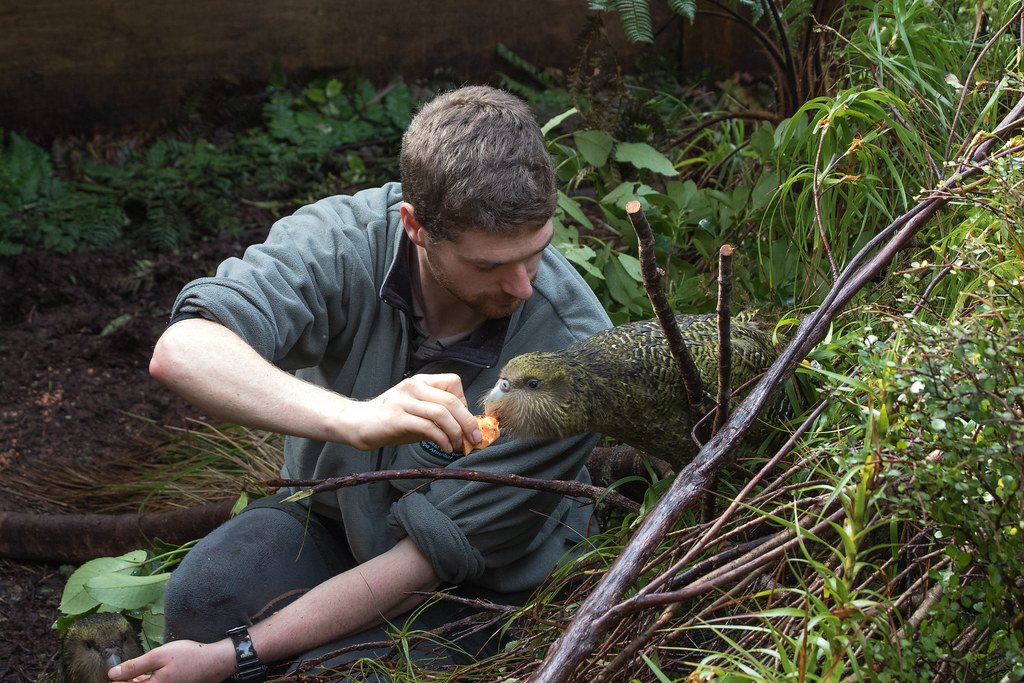Imagine a future where skyscrapers don’t just sit there; they actively clean the air by breathing, absorbing carbon dioxide, and even getting stronger over time. This isn’t science fiction; it’s the most advanced bio-architecture. Scientists at ETH Zurich have created a groundbreaking living building material that contains cyanobacteria, which are ancient microbes that photosynthesize like plants but also have the ability to turn CO₂ into solid limestone, which they will never be able to escape. What does this mean? Buildings that act like forests, cleaning up greenhouse gases from the air and changing in real time.
The Birth of a Carbon-Eating “Living Concrete”
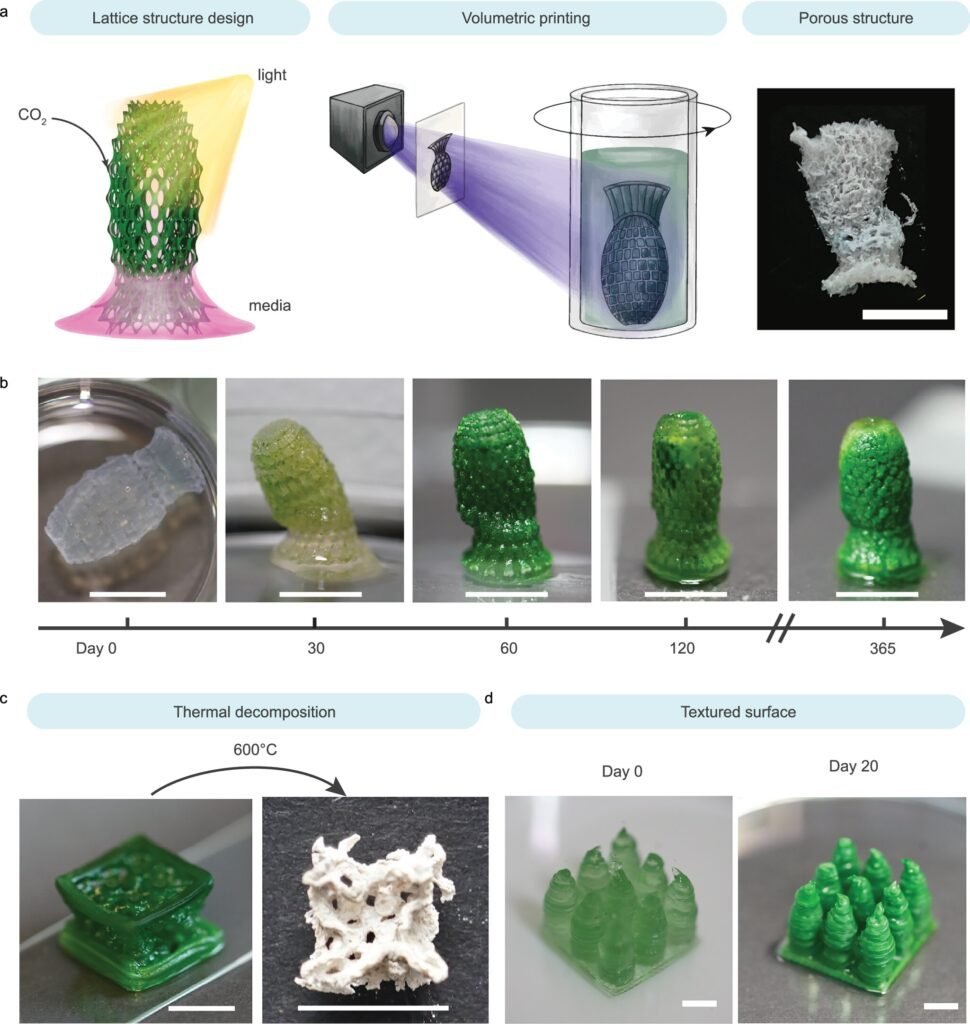
This breakthrough is based on a hydrogel that can be 3D-printed and is full of cyanobacteria, which are small organisms that have been improving photosynthesis for more than 2.5 billion years. This thing only requires sunlight, nourishment from the water, and CO₂ in the air to flourish. This is not the same as traditional carbon capture, which requires machinery that takes a lot of energy. After being printed into structures, the bacteria multiply and harden the material by adding calcium carbonate, which is like turning CO₂ into stone. Tests in the lab show that it can hold on to 26 mg of CO₂ per gram for more than 400 days. This is better than a lot of biological ways and just as good as industrial ones like turning old concrete into minerals.
Unlike normal concrete, which breaks down over time, this material gets stronger as minerals build up.
Dual Carbon Sequestration: How It Outperforms Trees
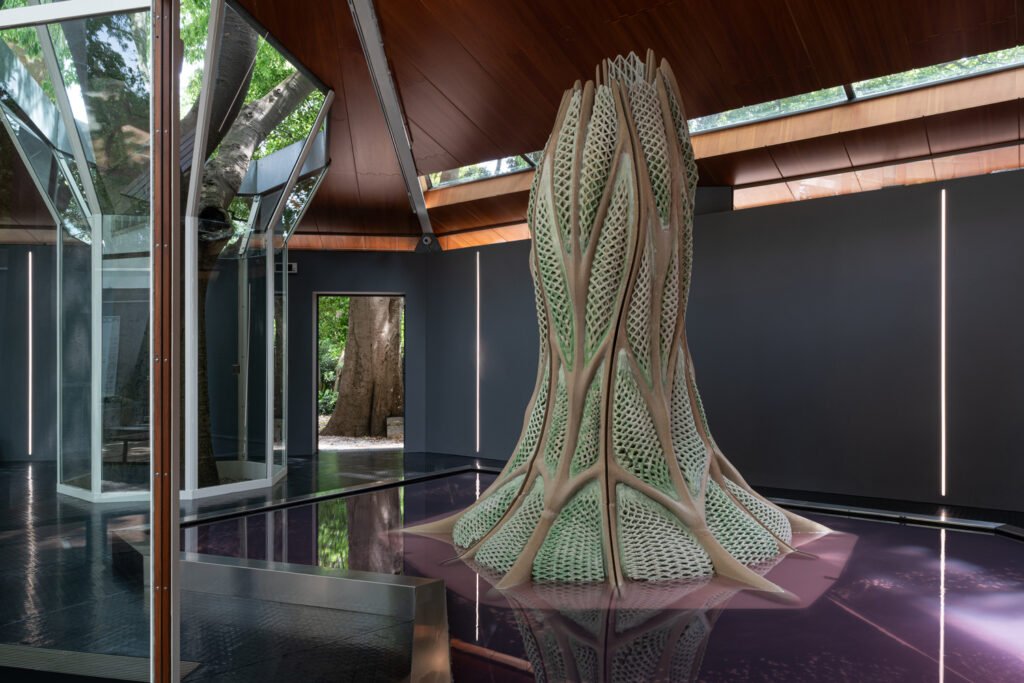
Cyanobacteria do something cool: they bind carbon twice. First, they turn CO₂ into biomass through photosynthesis. Second, they make their environment more alkaline, which makes dissolved CO₂ turn into solid carbonates. Because of this dual mechanism, the material takes in a lot more carbon than it gives off during production. For example, one 3-meter-tall structure made of this material can absorb 18 kg of CO₂ a year, which is the same as what a 20-year-old pine tree does in 68 years.
Important Fact: The mineralized carbon is stable for good, while plant-based sequestration can let CO₂ back into the air when it decays or catches fire.
From Lab to Façade: Real-World Debuts in Venice and Milan
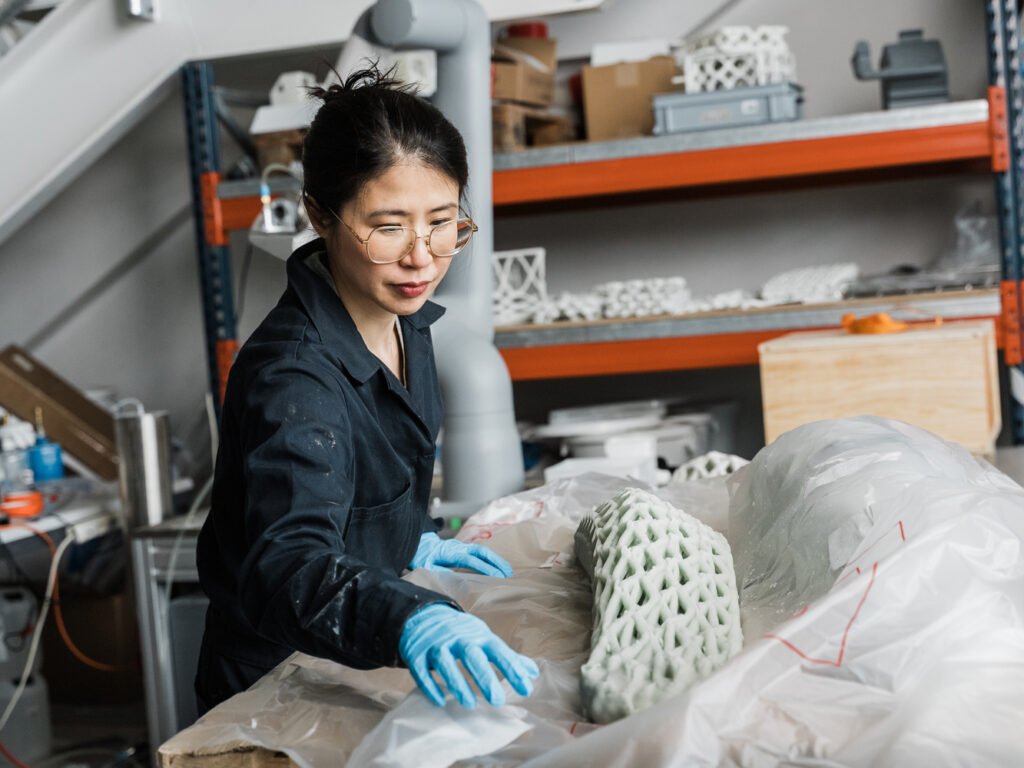
The tech has already moved from petri dishes to building installations:
- Picoplanktonics (Venice Biennale 2025): Two huge, tree-like sculptures in the Canada Pavilion act as living carbon sinks. Every day, they are checked for bacterial health and CO₂ uptake.
- Dafne’s Skin (Milan Triennale): Microbes grow on wooden shingles and make a bright green patina that turns decay into a lively design feature that absorbs CO₂.
To grow bacteria better, robotic “geographers” had to control light and humidity, which combined biology with AI-driven accuracy.
The Hydrogel Habitat: Engineering Life into Architecture
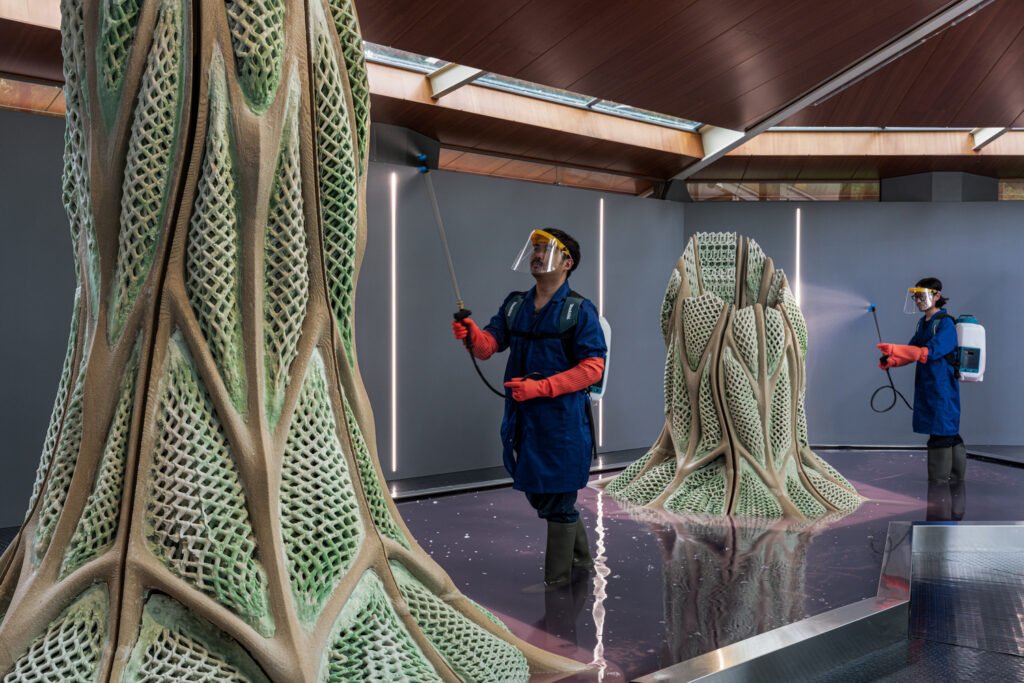
The bacteria reside in a hydrogel, which is a jelly-like matrix that aims to imitate how ecosystems work in nature. The holes let light, water, and nutrients in, but they keep the microorganisms within. Researchers utilized 3D printing to construct complicated lattice structures that have a lot of surface area for photosynthesis and for nutrients to pass through tiny blood vessels. This constructed environment kept the bacteria alive for more than a year, which is a record for bio-integrated materials.
Design Challenge: We had to stay away from thick polymers that could kill the bacteria in order to keep them alive.
Beyond Carbon: Self-Healing and Adaptive Buildings
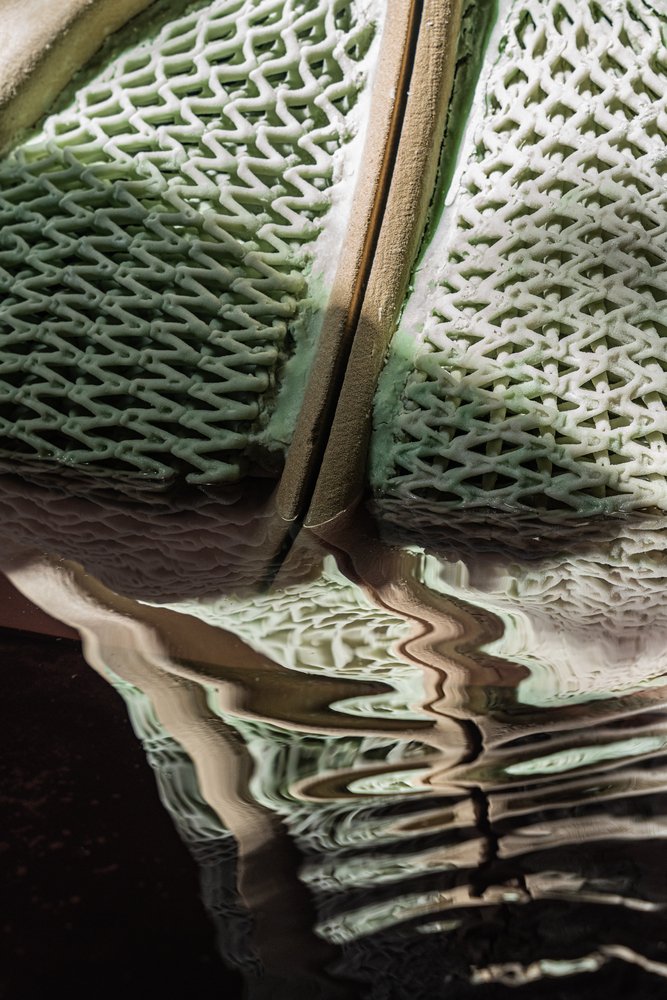
The project suggests a bigger change in how things work: infrastructure that can fix itself. Minerals naturally fill in the gaps as cracks form, just like bones heal. Some possible future uses are:
- Bioactive façades that get thicker in places with a lot of pollution.
- Roads that use cyanobacteria to soak up car emissions.
- Shelters that can withstand disasters and get stronger in bad weather.
Critics are worried about long-term maintenance: what will happen if the bacteria die? ETH said that dormant spores could be brought back to life with water and nutrients.
The Bigger Picture: A New Era of “Biotic Architecture”
This isn’t just about capturing carbon. It’s a big change in how we think about buildings as partners with nature. Exhibitions like We the Bacteria: Notes Toward Biotic Architecture (featuring Dafne’s Skin) look at how microbes can change how things look, making patinas and biofilm growth into design features instead of signs of decay.
Impact on the Industry: Startups are already racing to make similar materials available for sale. Prototypes range from bricks covered in algae to insulation made from fungi.
What’s Next? From Prototypes to Cityscapes
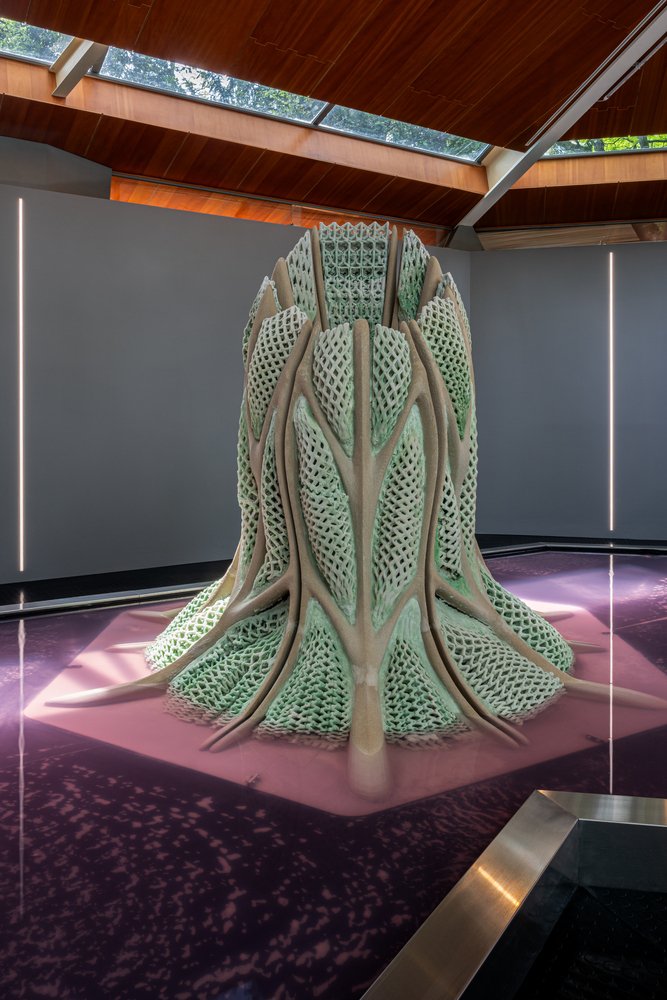
The next goal for the team is to put coatings on the outside of existing buildings, which will turn urban jungles into carbon sponges. There are still problems with scaling up production, making sure buildings last in bad weather, and following building codes, but the possibilities are huge. Professor Tibbitt says, “We’re not just building buildings.” We’re growing ecosystems.
Final Thought
If they work, cities could one day photosynthesize, combining skylines with the metabolic rhythms of ancient bacteria. This could mean that the future of architecture is alive.
Sources:

Jan loves Wildlife and Animals and is one of the founders of Animals Around The Globe. He holds an MSc in Finance & Economics and is a passionate PADI Open Water Diver. His favorite animals are Mountain Gorillas, Tigers, and Great White Sharks. He lived in South Africa, Germany, the USA, Ireland, Italy, China, and Australia. Before AATG, Jan worked for Google, Axel Springer, BMW and others.



